Man moving ashes in a crematorium in Dachau concentration camp, 1945. US Army Signal Corps photo, Gift of the Acosta Family, from the Collection of The National World War II Museum, 2014.057.035.
When German forces invaded Poland on September 1, 1939, marking the advent of World War II in Europe, the Dachau concentration camp had been in operation for six-and-a-half years. Already thousands of inmates had been incarcerated there.
With the start of the conflict, however, wartime necessities reshaped life and death in the Dachau concentration camp in fundamental ways. In virtually every case, these measures dramatically increased the already shocking level of brutality and degradation in place. Dachau remained the inception point, model, and fixture of an immense, interlocking system of concentration camps, even as the Nazi regime designed new types of camps that far surpassed what was conceivable in Theodor Eicke’s military-style “Maintenance of Discipline and Order.”
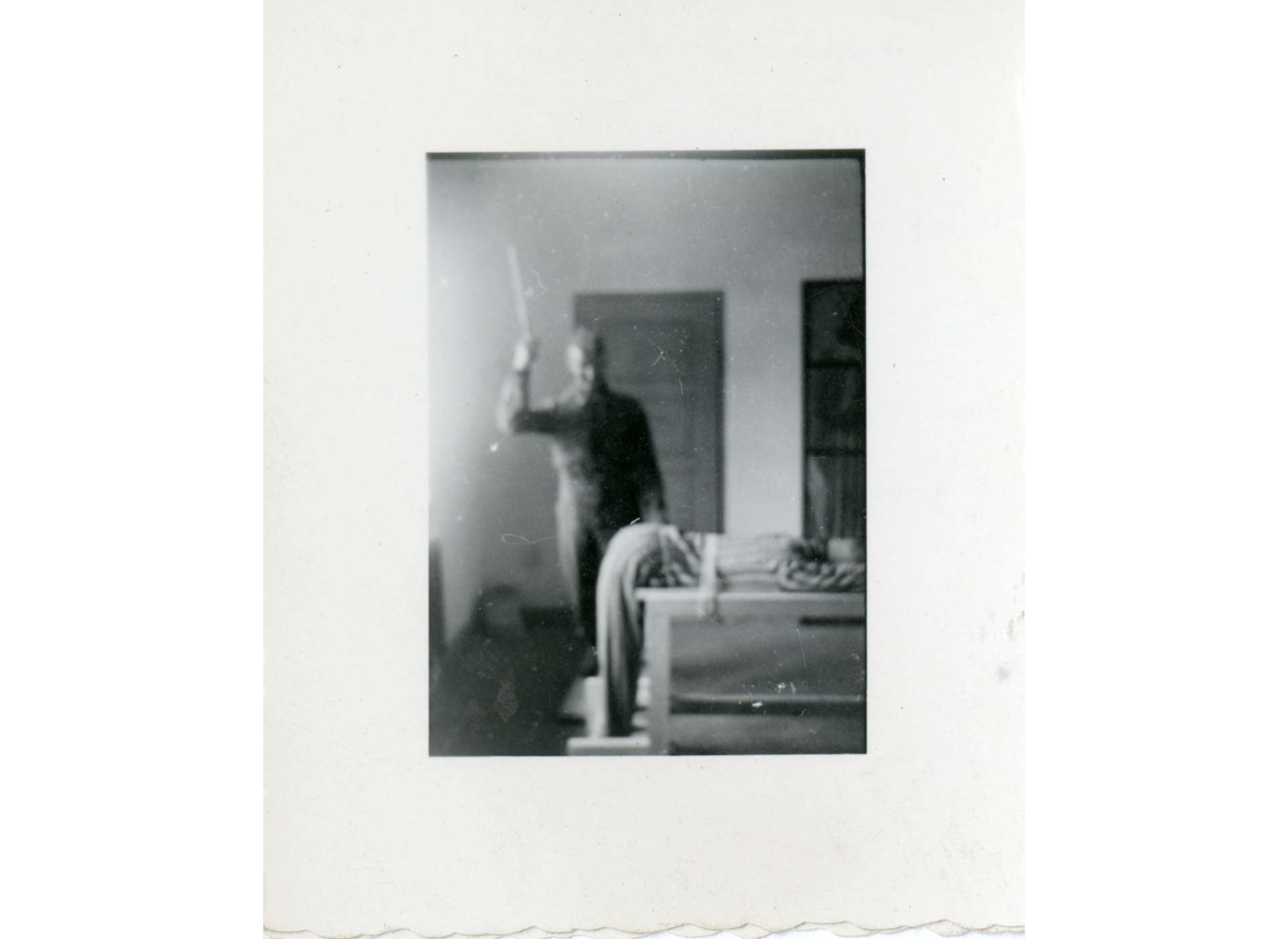
Two mannequins depict SS practice of corporal punishment in the Dachau concentration camp, 1945. Gift in the memory of Jack Hershkowitz, from the Collection of The National World War II Museum, 2015.457.105.
Indeed it was the execrable Eicke who went back and transformed Dachau right after the conquest of Poland had been completed. In early October 1939, Heinrich Himmler, leader of the SS, secured Adolf Hitler’s approval for the creation of three new SS divisions that would be utilized for the coming offensive against France and the Low Countries. Himmler then entrusted the dependable Eicke with command of the SS Totenkopf (Death’s Head) Division, one of these new units classified as Waffen SS (Combat SS or Armed SS). Eicke had led three SS Death’s Head regiments in the fighting in Poland and was responsible already for numerous war crimes against Poles. His consistent ruthlessness and fanaticism, bound up with the supreme wish to be a “political soldier,” made him the ideal—for Himmler—choice (Richard Glücks succeeded Eicke as Inspector of Concentration Camps).
The assignment necessitated Eicke’s return to Dachau to undertake all the organizational work for the division to be ready. All 4,700 inmates were transferred to Buchenwald, Flossenbürg, and Mauthausen. For the next two months, Dachau was the site of frenetic and frightful martial activity as Eicke and his newly assembled staff prepared the men for combat. Three of the division’s infantry regiments were drawn directly from the concentration camp guards Eicke had so carefully groomed during the previous half-decade.
In mid-December 1939, Eicke moved the Death’s Head Division to the Ludwigsburg-Heilbronn area, trained, and waited the order to attack in the West. The unit’s departure allowed for the reopening of Dachau as a Konzentrationslager. During those autumn months, Dachau’s former inmates, dispersed to other camps, struggled to survive. Mauthausen, rightfully feared as the worst destination for prisoners with its granite quarry and, even by SS standards, particularly cruel guard cadre, exacted a heavy toll on them.
After it reopened, Dachau once again served as the “model” for developments in the Nazi camp universe. Starting in early 1940, Dachau became a concentration point for clergy kept in “protective custody.” Several dozen German and Austrian men of the cloth had been imprisoned there in 1938-39. Some of the Austrians held ties to the right-wing Fatherland Front/Christian Social Party that had been ousted when Hitler annexed their country in March 1938 (in fact the Nazis transported several thousand Austrians, such as the rightist politician and journalist, Walter Adam, to Dachau following the Anschluss, but most did not stay there that long). A steady stream of Polish prisoners arrived between March and December 1940, more than 13,000 of them. Nikolaus Wachsmann directs our attention to the fact that among them were hundreds of Catholic priests. By the end of 1940, more than 1,000 clergy were held in Dachau, confined to one of the camp’s 32 barracks. Eventually, the Nazis sent nearly 2,700 clergymen there during World War II. According to Harold Marcuse, 93% of them were Catholic and 64% of them were Poles.
Leftists continued to constitute a major part of the population of political prisoners at Dachau. Hermann Langbein mentions how Austrian Communists, also deported to the camp following the Anschluss, apprised their German comrades of the state of the antifascist struggle in Spain. One of the “Reds” in Dachau was Hans Landauer, an Austrian member of the International Brigades who fought for the Spanish Republic, was captured in Paris following the German victory in France and taken to Dachau in early June 1941 (Landauer was the last surviving Austrian member of the International Brigades and died in July 2014). Contacts between camp and Communist underground organizations in Munich did emerge, an outgrowth of the use of prisoners for work in a porcelain-producing factory.
These were terribly dark times for any and all opponents of the Nazi regime in the concentration camp. German triumphs in Scandinavia, France and the Low Countries, then Yugoslavia and Greece, lent an air of invincibility to the Third Reich that the United Kingdom’s defiance during the Battle of Britain only partially undercut.
In 1941-42 conditions in Dachau, as in all the SS-run camps, became far more dangerous for inmates. Hitler’s invasion of the Soviet Union, the launching of a continent-wide genocide against European Jews, and the Third Reich’s declaration of war against the Jews signified a simultaneous globalization of the war and a radicalization of the Nazi regime. These developments could only mean new perils for the “enemies of the state” who found themselves in Dachau’s confines.
The massive influx of Soviet prisoners of war, captured in the huge encirclements in the several weeks after Operation Barbarossa, swelled Dachau’s population in 1941. Already in 1946, Eugen Kogon, a Catholic opponent of Nazism and survivor of Buchenwald, called readers’ attention to the barbarity with which the SS treated these POWs. He contended that some 10,000 members of the Soviet military perished during “liquidations” at Dachau. Kogon recalled that, at Buchenwald, the inmates were forced to assemble and sing while the Soviets were shot. More recent estimates by the United States Holocaust Memorial Museum put the number at 4,000 murdered at Dachau in 1941-42.
Nazi authorities subjected prisoners deemed perennially too weak for labor, chronically ill, or disabled to Aktion 14f13, initiated in July 1941. This depraved operation linked the concentration camps to the ongoing clandestine program of killing individuals with mental and physical disabilities, codenamed Operation T-4 and ordered by Hitler in the fall of 1939. Over 2,500 inmates from Dachau were shipped to the killing center at Hartheim Castle, near Linz in Upper Austria. There T-4 medical personnel put them to death them with carbon monoxide gas in the Castle’s gas chamber. They were among the 6,000 concentration camp prisoners murdered at Hartheim as part of Aktion 14f13.
The inhumanity did not stop with these atrocities. In 1942, “medical experiments” on inmates ensued. That phrase evokes only shudders now. “Those experiments,” wrote Robert Jay Lifton in The Nazi Doctors (1986), “in their precise and absolute violation of the Hippocratic Oath, mock and subvert the very idea of the ethical physician, of the physician dedicated to the well-being of patients.”
Who was responsible for these “experiments”? Members of Hermann Goering’s Luftwaffe and the German Experimental Institute for Aviation dispatched researchers and physicians to carry out hypothermia tests on helpless inmates. SS doctors also participated. The aim was to better treat air crews shot down over the frigid waters of the North Sea or soldiers exposed to subzero temperatures on the Eastern Front. Pure indifference to the victims characterized these episodes. Prisoners were compelled to stay in vats of ice-cold water, sometimes naked, sometimes in suits, for up to five hours at a time. Others were bound and left outside in winter months. In all cases, doctors, violating the Hippocratic Oath every step of the way, evaluated temperature, heart rate, and muscle activity. Dozens of the “subjects” did not survive.
The Luftwaffe sought as well knowledge about what to do when airmen ejected from their planes at high altitude. SS physician Sigmund Rascher, later executed by the Nazis for corruption late in World War II, aided these despicable efforts. Inmates were pushed into chambers that simulated altitudes of up to 68,000 feet and observations were made of how their bodies responded. Rascher reputedly dissected, too, the brains of prisoners while they were still alive to determine the causes of altitude sickness. Of the 200 men who went through these nightmares, all either perished or, if they survived the testing, were subsequently killed.
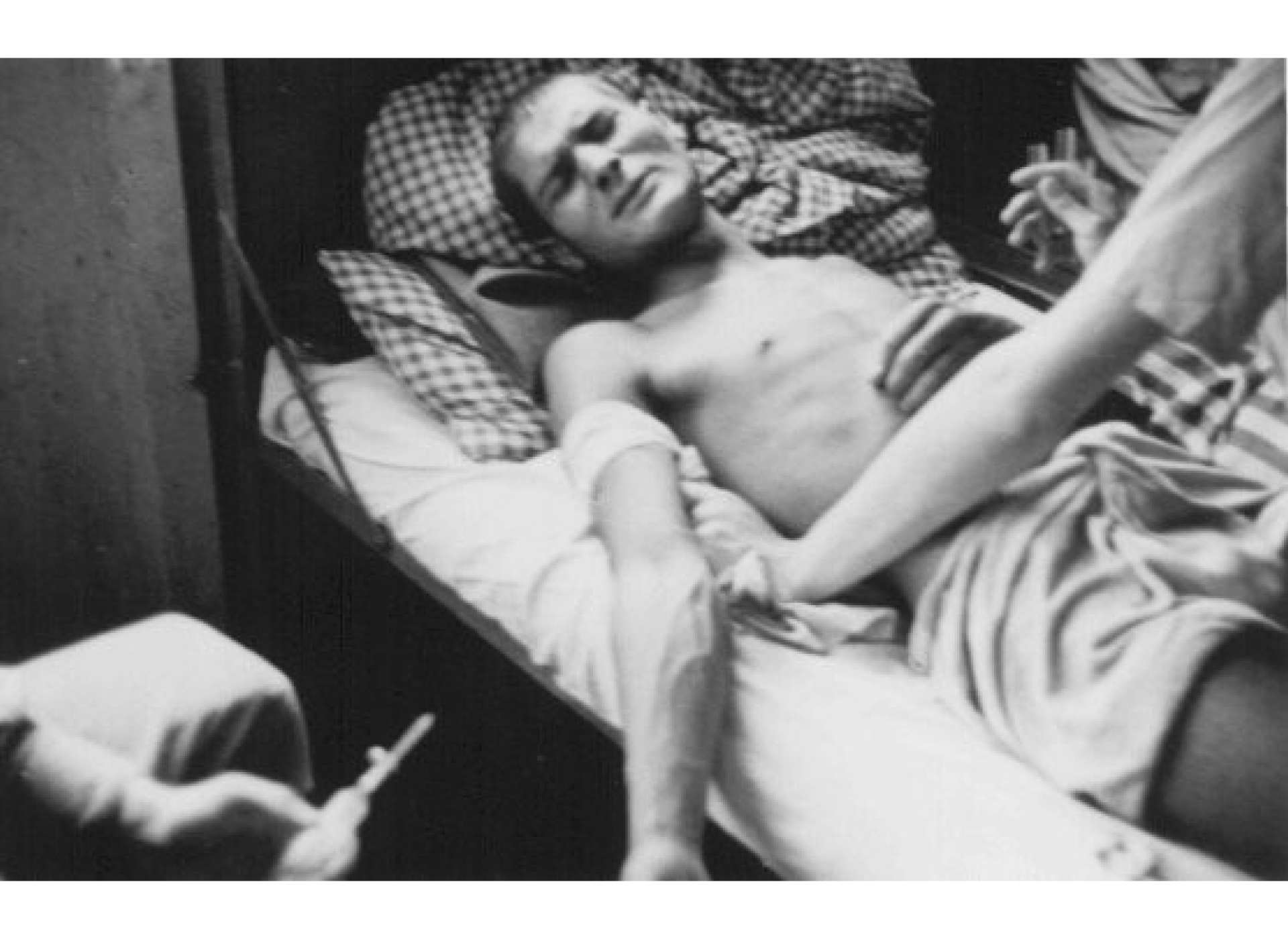
Romani victim of Nazi medical experiments to make seawater drinkable. Dachau, 1944. Credit: National Archives and Records Administration, College Park, Maryland. Courtesy of the United States Holocaust Memorial Museum.
Not to be forgotten were experiments involving treatment for malaria. The SS also compelled 90 Romani inmates to undergo experiments with the potability of seawater, conceived by anatomist Hans Eppinger and Dr. Wilhelm Beiglböck, both Austrians. The physical suffering, especially severe dehydration and hunger (food was withheld from them), inflicted on the 90 truly beggars the imagination.
While these “medical experiments” occurred behind closed doors, new evidence of ominous intent became visible in the layout of the camp itself. In 1942, a new crematorium was constructed, supplementing the existing one erected two years earlier. This new crematorium, named “Barrack X,” was fitted with four furnaces, a disinfection section, and, most chilling in retrospect, a gas chamber. Generally, the SS utilized the crematoria to immolate the bodies of inmates who died in the camp. They also hanged or shot inmates involved in resistance activity there (the whole area was separated from the prisoners’ barracks by a wall). Despite all the labor and resources expended, the SS, thankfully, never implemented the mass gassing of human beings at Dachau.
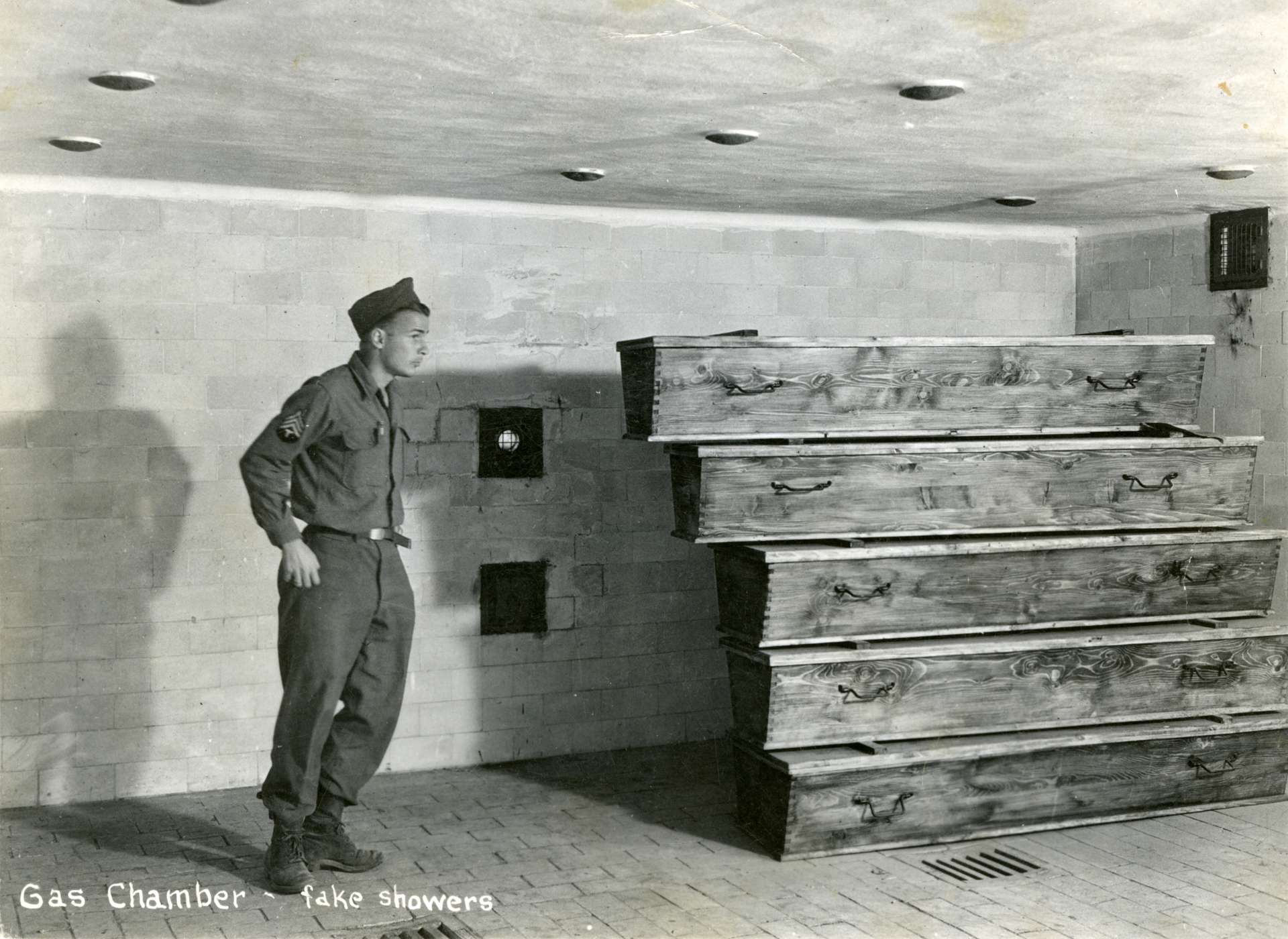
US soldier standing in the gas chamber in the Dachau concentration camp, 1945. Five wooden caskets are stacked along the wall. US Army Signal Corps photo, Gift of the United States Holocaust Memorial Museum, from the Collection of The National World War II Museum, 2009.373.061.
At the beginning of September 1942, Martin Weiss became commandant of Dachau Konzentrationslager. He remained in charge for fourteen months. His tenure represented a short-lived respite from the horrors of the previous few years. Historians of Dachau contend that Weiss lessened the severity of the camp’s regimen. By the end of his time as commandant, the war had turned against Hitler. News of defeats at Stalingrad, Kursk, North Africa, and Sicily drifted into the camp. Much worse lay ahead.
In 1943-44, as Nazi Germany’s war effort desperately needed workers, the population at Dachau, bereft of all rights, supplied thousands of men to the Third Reich’s huge and draconian program of slave labor. Of course, prisoners had long been made to work already, usually in construction projects around the camp or in Dachau’s light industry. Others conducted roadwork, drained marshes, or labored in gravel pits. All of these operations, though, stayed relatively close to the camp.
After D-Day and the June 1944 Soviet offensive, Operation Bagration, as the German military situation grew more dire, subcamps, 140 of them, mushroomed in southern Bavaria. The largest was Kaufering. This vast network connected Dachau’s prisoners to major nodal points of industry in the region. Inmates traveled in the summer and fall of 1944 to factories and armaments facilities (e.g. BMW’s factory at Allach) and sacrificed their health and hopes for survival. Without conscience, the SS simply worked many of these men to death.
As winter approached in late 1944, the men of Dachau had endured more than enough. Overcrowding, disease, malnutrition, and extreme maltreatment would soon threaten their very existence. The last days of the Dachau concentration camp I cover in the next and final article in this series.
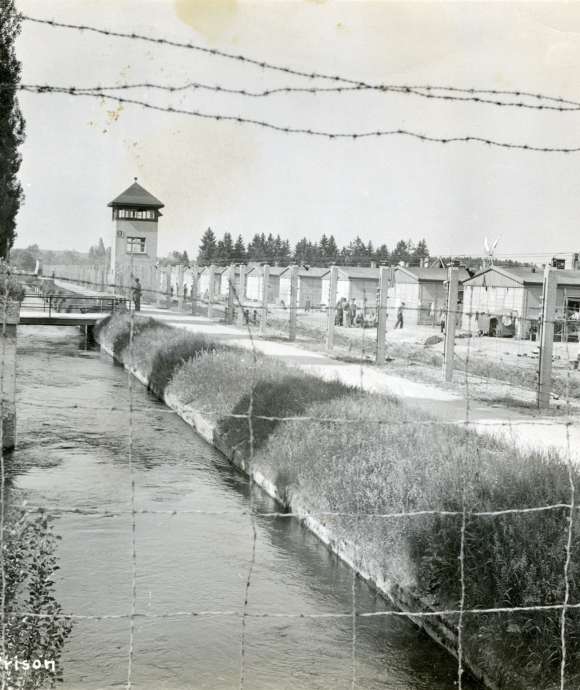
Part 1: Dachau, the “Model” Concentration Camp, 1933-39
In June 2004, while spending a weekend in Munich away from dissertation research at the Austrian National Library, I boarded a train in the city’s Hauptbahnhof (Central Station) for a short trip.
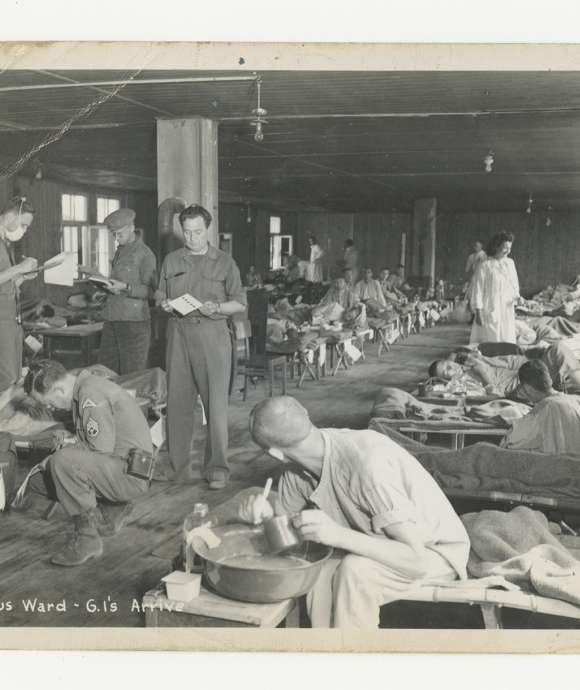
Part 3: The Last Days of the Dachau Concentration Camp
For the last several days of its existence, before soldiers of the United States Seventh Army arrived, Dachau was a small, self-enclosed universe of decay and death.
Jason Dawsey, PhD
Jason Dawsey, PhD, is ASU WWII Studies Consultant in the Jenny Craig Institute for the Study of War and Democracy.
Cite this article:
MLA Citation:
APA Citation:
Chicago Style Citation:
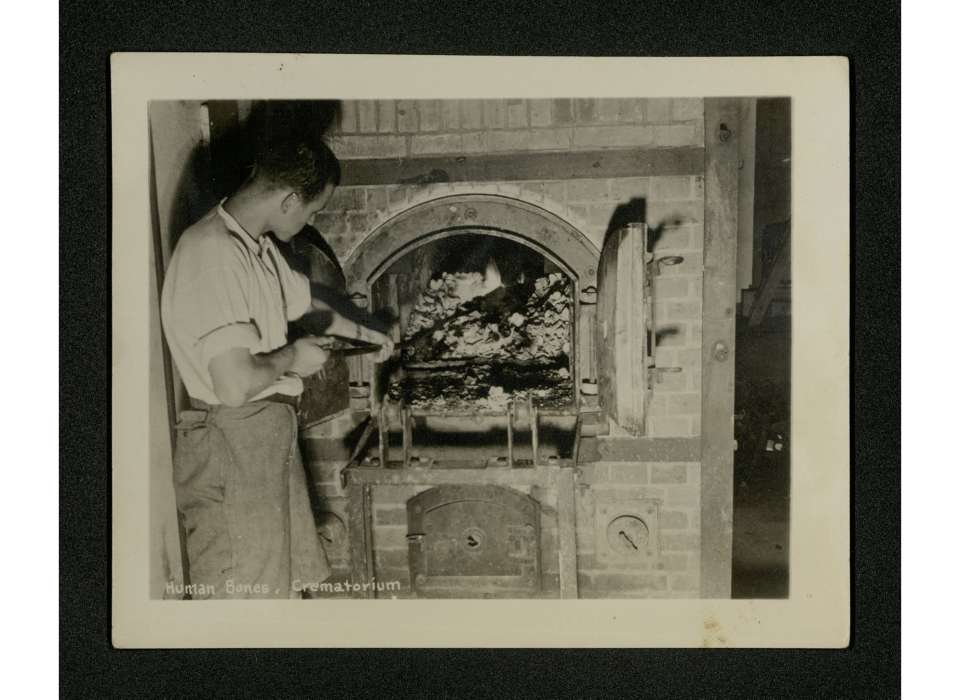

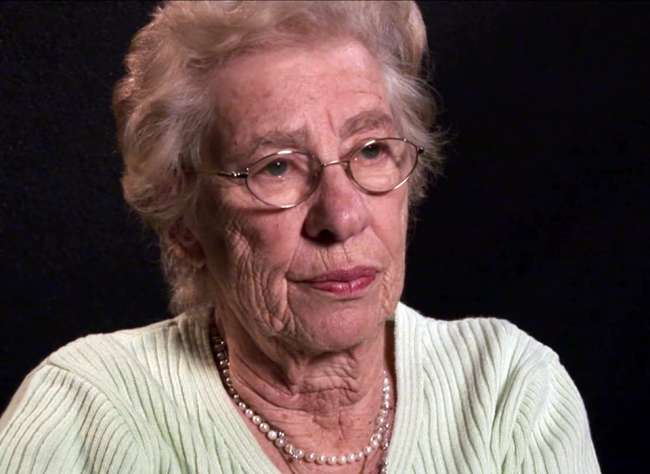



![Max Fuchs, New York City cantor, sings as Rabbi Sydney [sic] Lefkowitz, Richmond, VA, conducts the first Jewish services from Germany.](/sites/default/files/styles/max_650x650/public/2025-10/image1.jpg)


